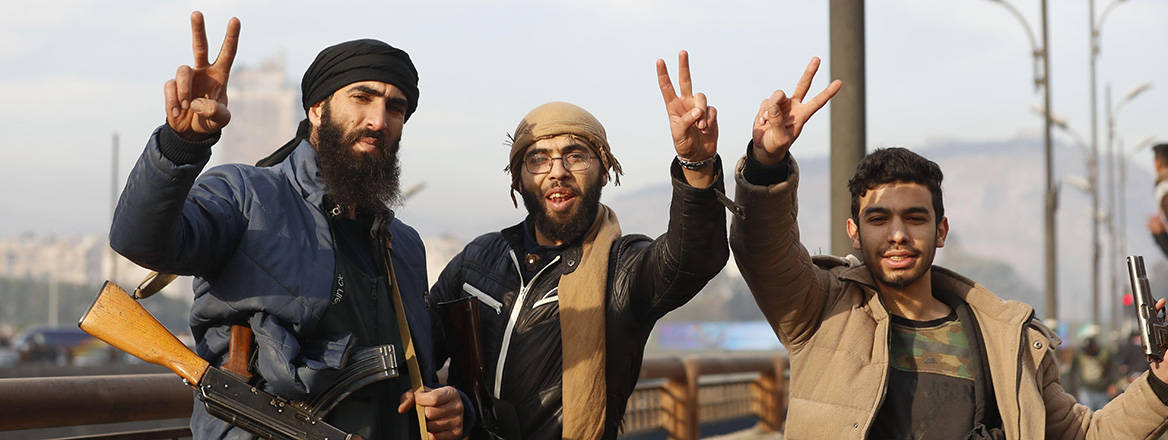Given the array of other Syrian groups, sects and political ideologies that have operated in partnership on the march to Damascus, HTS will have to share power with other Syrians. Either we may be unsurprised to witness a descent into chaotic power struggles between factions, or – if homework has been done – we may be surprised by a less radical government than HTS’s terrorist pedigree would suggest. However, comparisons with the Taliban and other, more fragmented movements are too easily made – until demonstrated otherwise, a radical Islamic fundamentalist government must remain the core assumption if HTS seizes power over the heads of others. This would not bode well for a country crippled by sanctions and reliant on Iranian fuel and foreign humanitarian aid.
How Did Key Players Act?Turkey
Turkish President Recep Tayyip Erdogan has taken pains to say ‘I told you so’, suggesting that his shift in stance on ‘holding back’ HTS to date was due to Assad’s intransigence on negotiating future dynamics in Syria, particularly the conditions which would permit the return of millions of Syrians currently taking refuge on Turkish soil. But the Turkish role is potentially being inflated. HTS is not controlled by Turkey; its actions align with a message Erdogan wants to send to all stakeholders in Syria – particularly the Russians and the incoming Trump administration – that Turkey holds some of the most significant levers on influence across the region. HTS tactical alliances and strategic coordination with Turkish-backed rebel factions (particularly the SNA, a Turkish auxiliary operating in Syria’s north) have bolstered HTS’s operational strength and facilitated some alignment, but so has careful coordination and deconfliction with the US-backed, Kurdish-led SDF, an implacable enemy of Turkey which its SNA partners continue to attack. If the SDF becomes too prominent in any post-Assad Syria, Turkey may again take military action (a scenario against which the SDF is currently positioning to defend).
Russia
Given Russia’s naval and air bases in Syria and the strategic costs it has sunk into the country since intervening in 2014, it might be surprising that Russia has not done more to defend Assad. But Russia’s strategic priority is clear – Ukraine. Russia has consolidated its positions and is watching opposition movements carefully – their forces are within 30km of Tartus and Hmeimim, key Russian naval and air force bases. It is clear that Russia is in contact with opposition forces and reports now suggest that Russian military bases and diplomatic missions have been ‘guaranteed security’. Nonetheless, there are indications of Russian concern over the speed of the rebel advance, with limited military movements out of Tartus and Hmeimim. A Russian diplomatic warning to its citizens to leave Syria by commercial means, meanwhile, was an indication that substantial assistance to the regime was not on the way. Russia would not pull troops from Ukraine to aid Assad in Syria, and even reports that the post-Wagner private military company ‘Africa Corps’ would be redirected to Syria were likely out of date; the battlefield situation moved so fast that Russian forces in Syria had to prioritise their own force protection.
Iran
These developments are critical for Iran, in that opposition control of Homs and the whole M5 highway (the north-south road linking Aleppo to Damascus, running along the Lebanese border) will disrupt Lebanese Hezbollah’s main supply routes. With Hezbollah severely weakened by 14 months of war with Israel, it needs resupply more than ever. Hezbollah will also be concerned about the threat of Sunni jihadist groups entering Lebanon’s north (a situation that has happened in the past, though in a recent statement HTS has denied any such plans). Weakening Hezbollah further by cutting it off from Syria could lead to de-escalation and a new political consensus in Lebanon, but it could equally feasibly pave the way for a further round of fighting with Israel if the fragile 60-day Hezbollah-Israel ceasefire, which ends in January, falls apart.
What Now?
The upending of the fragile status quo in Syria is linked with, and impacts, the instability that now extends from the Mediterranean to the borders of Afghanistan. Questions about the second-order effects are now being tested. On the basis of what key actors believe has happened, many Middle Eastern powerbrokers are positioning themselves to limit risks and manage the aftermath for their own pressing security priorities.
For several states, uncertainty as to the political alignment of HTS and its allies, as well as whether it has really renounced the ideology of its AQ-affiliated roots, will be the immediate challenge in an already uncomfortably complex outlook. And this at a time when there are indications of a resurgence of Islamic State in Syria and Iraq.
It is now clear that some of Assad’s closest partners, including Russia, Iran and Hezbollah, were all convinced he was finished well before he stood down. In the end, the pace of the offensive was inexorable. Turkey is seen as a key influencer. Russian diplomats are taking care to blame the US, the UK and Israel for backing ‘Islamists’ – but not Turkey. Iran also has moderated the language its state media uses to discuss rebels, and has publicly said it ‘lost faith’ in Assad. This weekend’s gathering of Iranian, Russian and Turkish diplomats in Doha was the key opportunity to create an offramp agreement which protected at least some collective interests in the future stability of Syria, at the cost of an exit for Assad. The signatories to this agreement are all parties likely to maintain interests and take roles in Syria going forward.
